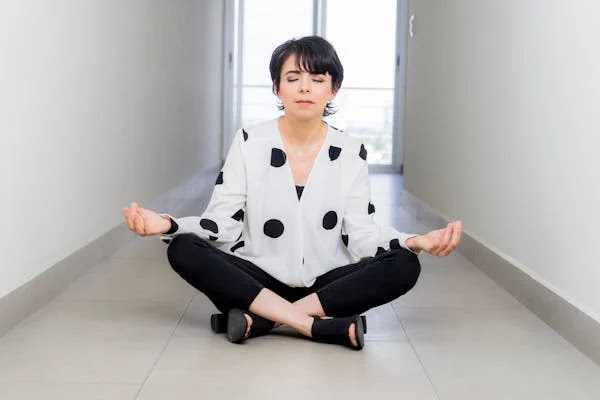Breathing is a key part of yoga practice. It helps you stay calm, focused, and improves your overall experience. Many new yoga practitioners don’t realize how important breathing is during yoga poses. Learning proper breathing techniques will not only make your yoga practice more effective but also reduce stress and improve your health. Let’s explore some of the best breathing techniques for beginners. Below is a simple summary of these techniques.
| Technique | Focus | Benefit | Difficulty |
|---|---|---|---|
| Diaphragmatic Breathing | Relaxation | Reduces stress | Easy |
| Ujjayi Breathing | Focus and Heat | Builds internal heat | Moderate |
| Alternate Nostril | Balance | Calms the mind | Moderate |
| Equal Breathing | Calmness | Improves focus | Easy |
1. Diaphragmatic Breathing (Belly Breathing)
Diaphragmatic Breathing is one of the easiest techniques for beginners. This breathing method helps you relax by focusing on your belly movements. To do this, sit or lie down comfortably and place one hand on your chest and the other on your belly. Breathe in deeply through your nose, letting your belly rise as you inhale. Exhale slowly through your mouth, allowing your belly to fall. This technique calms the nervous system and reduces stress, making it a great way to start your yoga session.
2. Ujjayi Breathing (Ocean Breath)
Ujjayi Breathing, also known as Ocean Breath, is a technique that helps build heat in the body and improves focus during yoga practice. To practice Ujjayi, close your mouth and take a deep breath in through your nose. As you exhale, slightly constrict the back of your throat, creating a soft, whispering sound. This sound resembles ocean waves, which is why it’s called Ocean Breath. Ujjayi breathing is perfect for maintaining focus, especially during challenging poses, and helps you stay in control of your movements.
Benefits of Ujjayi Breathing:
- Keeps you focused during practice
- Helps build internal heat
- Improves control over your breath
3. Alternate Nostril Breathing (Nadi Shodhana)
Alternate Nostril Breathing is a great technique for calming the mind and balancing your energy. This technique involves breathing through one nostril at a time. Start by sitting comfortably, closing your right nostril with your thumb, and inhaling deeply through your left nostril. Then, close your left nostril with your ring finger, open the right nostril, and exhale. Repeat this pattern, switching nostrils after each inhale. Alternate Nostril Breathing is excellent for relaxation and can be used before meditation or at the end of a yoga session.
Some key benefits:
- Reduces stress and anxiety
- Balances the body’s energy
- Improves concentration
4. Equal Breathing (Sama Vritti)
Equal Breathing is a simple technique that focuses on making your inhales and exhales the same length. To practice this, breathe in slowly for a count of four, and then exhale for the same count of four. You can increase the count as you become more comfortable with the technique. This breathing method helps to calm your mind and improve your focus, making it a good option for beginners who want to deepen their breathing practice.
5. Cooling Breath (Sheetali Pranayama)
Cooling Breath is a unique technique that helps cool down your body and relax your mind. To do this, sit comfortably and roll your tongue into a tube shape. Inhale through your rolled tongue, and then exhale through your nose. If you can’t roll your tongue, you can purse your lips and inhale through them. This breathing technique is perfect for hot days or when you feel overheated after a vigorous yoga session. It helps to lower your body temperature and bring a sense of calm.
6. Lion’s Breath (Simhasana)
Lion’s Breath is a fun and powerful technique that helps release tension and stress. To practice Lion’s Breath, sit comfortably, take a deep inhale through your nose, and then open your mouth wide and stick your tongue out while exhaling forcefully. As you exhale, make a roaring sound, like a lion. This technique can feel silly at first, but it’s an effective way to relieve built-up tension in your face, neck, and chest. Lion’s Breath also boosts your energy and leaves you feeling refreshed.
Conclusion
Breathing techniques are a vital part of any yoga practice, especially for beginners. They help to calm the mind, improve focus, and boost the benefits of yoga poses. Whether you're using Diaphragmatic Breathing to relax, Ujjayi Breathing to build focus, or Lion’s Breath to release tension, these techniques will support your yoga journey. Remember to practice regularly and enjoy the benefits of both physical and mental well-being.

